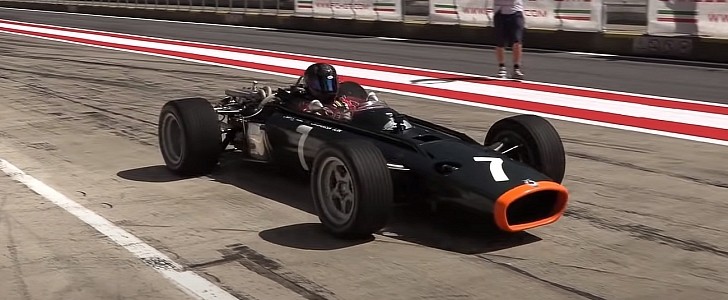Racing is heavily restricted nowadays, but there was a time when the rulebook was much more open. And some carmakers took full advantage of that to create cars with wild aerodynamics and engines. Many experimental powertrains were far from successful, but they lived on as proof that motorsport was far more interesting back in the day.
Engineers experimented with both cylinder number and layout, going beyond the usual V8 and V12. Porsche, for instance, went as far as to design a 16-cylinder mill for the Can-Am series, but the monstrous powerplant never made it onto the track.
British Racing Motors (BRM), on the other hand, built and actually raced a 16-cylinder unit. And because a V16 layout seemed too simple, BRM took a more complicated route and put together an H16.
Having raced a reliable and potent 1.5-liter V8 in the early 1960s, BRM began working on a brand-new mill for the 1966 season, which was set to start under new rules that increased displacement for naturally aspirated units to 3.0 liters.
BRM initially had two designs on the table. A more conventional V12 and an experimental H16 layout consisting of two flat eight-cylinder engines stacked one on top of the other. Despite the more complicated design of the latter, BRM eventually decided to go with the H16.
Featuring eight camshafts, four ignition systems, and a separate radiator, distributor, and water pump for each straight-eight unit, the H16 was extremely complex and showcased terrible reliability from the early stages.
But BRM's engineers didn't give up and delivered a final design for the 1966 season. While it was powerful enough to compete with the Ferrari, Honda, and Cosworth mills of the era, it was also larger, heavier, and thirstier.
The H16-equipped cars hit the track in the first race of the 1966 season, but both Jackie Stewart and Graham Hill eventually opted to drive BRM's older V8 racers. Several issues forced BRM to postpone the H16's race debut until the seventh round, but all cars fitted with the experimental unit retired, failing to finish a single race.
BRM returned with an improved version for 1967. The H16 performed better, and Jackie Steward scored a second-place finish, but the British team ended the season in sixth place following several retirements due to reliability issues.
The outfit phased out the H16 after the 1967 season, but there's one accomplishment that needs to be mentioned here. A Lotus 43 fitted with an H16 engine won the 1966 U.S. Grand Prix with Jim Clark behind the wheel.
Needless to say, BRM's H16 engine could easily find its way in "Formula One's biggest fails" file, but it's one of those weird experimental creations that deserves a bit more attention. Especially since it actually sounds fantastic, perhaps better than many iconic F1 engines. Check it out flexing in a 1966 BRM P83 at a recent historic racing event.
British Racing Motors (BRM), on the other hand, built and actually raced a 16-cylinder unit. And because a V16 layout seemed too simple, BRM took a more complicated route and put together an H16.
Having raced a reliable and potent 1.5-liter V8 in the early 1960s, BRM began working on a brand-new mill for the 1966 season, which was set to start under new rules that increased displacement for naturally aspirated units to 3.0 liters.
BRM initially had two designs on the table. A more conventional V12 and an experimental H16 layout consisting of two flat eight-cylinder engines stacked one on top of the other. Despite the more complicated design of the latter, BRM eventually decided to go with the H16.
Featuring eight camshafts, four ignition systems, and a separate radiator, distributor, and water pump for each straight-eight unit, the H16 was extremely complex and showcased terrible reliability from the early stages.
But BRM's engineers didn't give up and delivered a final design for the 1966 season. While it was powerful enough to compete with the Ferrari, Honda, and Cosworth mills of the era, it was also larger, heavier, and thirstier.
The H16-equipped cars hit the track in the first race of the 1966 season, but both Jackie Stewart and Graham Hill eventually opted to drive BRM's older V8 racers. Several issues forced BRM to postpone the H16's race debut until the seventh round, but all cars fitted with the experimental unit retired, failing to finish a single race.
BRM returned with an improved version for 1967. The H16 performed better, and Jackie Steward scored a second-place finish, but the British team ended the season in sixth place following several retirements due to reliability issues.
The outfit phased out the H16 after the 1967 season, but there's one accomplishment that needs to be mentioned here. A Lotus 43 fitted with an H16 engine won the 1966 U.S. Grand Prix with Jim Clark behind the wheel.
Needless to say, BRM's H16 engine could easily find its way in "Formula One's biggest fails" file, but it's one of those weird experimental creations that deserves a bit more attention. Especially since it actually sounds fantastic, perhaps better than many iconic F1 engines. Check it out flexing in a 1966 BRM P83 at a recent historic racing event.








